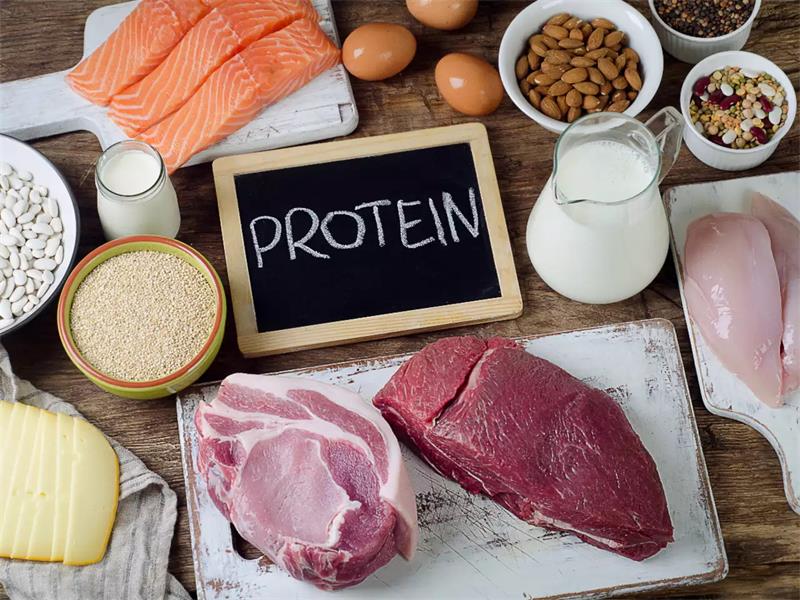Contents
- 1 Understanding Gluten-Free and Wheat-Free Diets
- 2 What is Gluten?
- 3 Foods to Avoid on a Gluten-Free Diet
- 4 Benefits and Drawbacks of a Gluten-Free Diet
- 5 Tips for Maintaining a Healthy Balanced Gluten-Free Diet
- 6 What is Wheat?
- 7 Wheat-Free Diet
- 8 The Difference Between Gluten-Free and Wheat-Free Diets
- 9 Conclusion
Understanding Gluten-Free and Wheat-Free Diets
Eating gluten-free or wheat-free is no longer limited to people with celiac disease or wheat allergy; in recent years, it has become a trendy way of eating. While some people follow these diets for health reasons, others do so as a lifestyle choice. However, the terms “gluten-free” and “wheat-free” are often used interchangeably, leading to confusion about what they mean.
The Popularity of Gluten-Free and Wheat-Free Diets
The gluten-free diet trend began when people started discovering that they felt better after eliminating gluten from their diets. This led to an increase in demand for gluten-free products and restaurants offering gluten-free menus. Similarly, the wheat-free diet trend emerged as people started avoiding wheat for various reasons such as sensitivity or intolerance.
Today, there are numerous options available in supermarkets and restaurants for those who follow a gluten-free or wheat-free diet. Many people are turning to these diets because they believe they will lead to weight loss or improved energy levels.
The Difference Between Gluten-Free and Wheat-Free Diets
While both gluten and wheat can be found in similar foods such as bread and pasta, the two terms are not interchangeable. Gluten is a protein found in grains such as wheat, rye, barley, spelled, kamut, triticale, farro and semolina. On the other hand, wheat is one of several grains that contain gluten.
A key difference between the two diets is that a gluten-free diet eliminates all sources of gluten while a wheat-free diet only eliminates wheat-based products but may include other sources of gluten. Additionally, while those with celiac disease must strictly avoid all sources of gluten due to an autoimmune response triggered by this protein; those with wheat allergy or sensitivity can sometimes tolerate gluten as long as it does not come from a wheat source.
Overall, understanding the differences between gluten-free and wheat-free diets is important in making informed choices about what to eat. In the next sections, we will take a closer look at each diet and explore its benefits, drawbacks, and foods to avoid.
What is Gluten?
If you’ve been to a grocery store lately, you’ve probably seen a lot of foods labeled as “gluten-free.” But what exactly is gluten? Gluten is a protein that’s found in many grains, including wheat, barley, and rye.
It’s the element that gives dough its elasticity and helps it rise when baked. In recent years, gluten has become the villain in the world of nutrition.
Many people have adopted a gluten-free diet as a way to improve their health or lose weight. But for some people, avoiding gluten isn’t just a choice — it’s a necessity.
Sources of Gluten in Common Foods
Gluten can be found in many common foods and ingredients. Obviously, anything made with wheat flour (like bread and pasta) will contain gluten.
But there are also less obvious sources of gluten to look out for. For example, soy sauce often contains wheat as an ingredient.
Beer is made with barley (which contains gluten), so it’s not safe for those with celiac disease or other conditions requiring a gluten-free diet. Even some medications and supplements can contain hidden sources of gluten.
Health Conditions That Require A Gluten-Free Diet
The most well-known condition that requires following a strict gluten-free diet is celiac disease. Celiac disease is an autoimmune disorder where ingesting even small amounts of gluten can damage the lining of the small intestine and cause digestive issues like diarrhea or constipation. Other conditions that may require avoiding gluten include non-celiac gluten sensitivity (a condition where individuals experience similar symptoms to celiac disease but do not have the same immune response), dermatitis herpetiformis (a skin condition related to celiac disease), autism spectrum disorder (some studies suggest that a gluten-free diet may help manage symptoms), and wheat allergy (an immune response to the proteins found in wheat).
While avoiding gluten has become a popular diet trend, it’s important to remember that for some people, it’s not a choice — it’s a necessary part of managing their health. If you suspect you may have celiac disease or another condition requiring a gluten-free diet, talk to your doctor before making any changes to your eating habits.
Foods to Avoid on a Gluten-Free Diet
Going gluten-free means cutting out foods that contain gluten, which is found in many grains such as wheat, barley, and rye. This means avoiding common foods like bread, pasta, cereal, and baked goods that are made with these grains. It’s important to read food labels carefully since gluten can also be found in unexpected places like soups, sauces, and even some types of candy.
Other foods that may contain gluten include beer, imitation meats made with wheat protein, and some types of spices which may have been contaminated during processing. It may seem daunting at first to give up so many common foods but there are plenty of delicious alternatives available that are naturally gluten-free or specifically created for those who follow a gluten-free diet.
Benefits and Drawbacks of a Gluten-Free Diet
A clear benefit of going gluten-free is for those who have celiac disease or non-celiac gluten sensitivity. Eating even small amounts of gluten can trigger symptoms ranging from mild digestive issues to severe damage to the intestinal lining.
Going on a strict gluten-free diet can alleviate these symptoms and prevent further damage from occurring. However, for those without celiac disease or a sensitivity to gluten, going on a completely gluten-free diet may not provide any noticeable health benefits.
In fact, it could potentially lead to deficiencies in certain nutrients commonly found in whole-grain products such as fiber and B vitamins. It’s important for anyone considering a switch to go over their decision with their doctor or a registered dietitian who can help them make informed choices about their nutrition needs.
Tips for Maintaining a Healthy Balanced Gluten-Free Diet
Maintaining a healthy balanced diet while going gluten-free is possible with the right information and planning. Try incorporating naturally-gluten free grains like quinoa or brown rice into meals instead of relying solely on processed gluten-free products.
Look for whole-grain versions of gluten-free products when possible to ensure that your diet is still full of key nutrients. Additionally, be mindful of added sugars and fats in gluten-free foods, as they can often be higher than their gluten-containing counterparts.
Eating plenty of fruits, vegetables, lean proteins, and healthy fats like nuts and seeds can help ensure a balanced diet. Going on a gluten-free diet can be challenging at first but with the right support and guidance it is possible to maintain a healthy and enjoyable lifestyle while avoiding gluten.
What is Wheat?
Wheat is a common cereal grain that is widely cultivated and used in the production of many food products such as bread, pasta, pastries, cereals, and many more. It’s a staple food for many people around the world due to its versatility and nutritional value. However, like gluten, some people are allergic or sensitive to wheat.
Wheat contains several important nutrients such as carbohydrates, protein, fiber, vitamins B and E, and minerals like zinc and iron. However, not all wheat products are created equal; some are highly processed and lack essential nutrients while others are whole-grain varieties that offer more nutritional value.
Sources of wheat in common foods
Wheat can be found in many different types of food products; even some unexpected ones such as soy sauce or beer. Some common sources of wheat include bread (including white bread), pasta (including spaghetti), baked goods (cakes, cookies), cereals (cornflakes), crackers (saltines), couscous and bulgur. When shopping for food products it’s important to check labels carefully to ensure that they don’t contain wheat or any other allergens you may be sensitive to.
Health conditions that require a wheat-free diet
People with celiac disease must follow a strict gluten-free diet because consuming gluten can damage their small intestine which can lead to serious health complications. However, some people with non-celiac gluten sensitivity or other digestive disorders may also benefit from avoiding wheat which could trigger symptoms such as bloating or abdominal pain.
In addition to these conditions mentioned above, there are other health concerns where avoiding wheat could be beneficial such as those with autoimmune disorders or Irritable Bowel Syndrome (IBS). If you suspect you have a condition that requires you to avoid certain foods including wheat it’s best to consult your doctor who can help make dietary recommendations.
Wheat-Free Diet
Foods to avoid on a wheat-free diet
A wheat-free diet involves eliminating all sources of wheat from your diet. This may seem daunting, but there are plenty of alternatives available.
It’s important to avoid any food that contains wheat or its derivatives, including:
- Bread
- Pasta
- Cereals
- Baked goods such as cakes and cookies
- Beer (unless it’s specifically labeled gluten-free)
It’s also important to be aware of hidden sources of wheat, such as soy sauce and other condiments, which can contain wheat-based ingredients.
Benefits and drawbacks of a wheat-free diet
A wheat-free diet can have numerous benefits for those who suffer from gluten intolerance or celiac disease. For these individuals, consuming even a small amount of gluten can cause uncomfortable symptoms such as stomach pain, bloating, and diarrhea.
A wheat-free diet can also benefit individuals with non-celiac gluten sensitivity. The drawbacks of a wheat-free diet include the difficulty in finding substitutes for common foods that contain wheat.
Many processed foods contain some form of wheat or gluten derivative, which means that individuals following a strict grain-free protocol may need to spend more time preparing their own food at home. It is worth noting that not everyone needs to follow a strict grain-free protocol and many people thrive on whole grains like rice and quinoa which don’t contain gluten.
Tips for maintaining a healthy, balanced wheat-free diet
A diet without wheat can be healthy and balanced, but it requires some extra planning. Here are some tips to keep in mind:
- Focus on whole foods such as fruits, vegetables, and non-wheat grains like quinoa and brown rice.
- Get enough protein from sources like eggs, beans, and nuts.
- Use gluten-free flour like almond flour or chickpea flour for baking.
- Be mindful of eating out at restaurants or social gatherings that may offer limited wheat-free options. Check the ingredients or ask about alternative menu items that are free from wheat or gluten.
With a little bit of preparation and creativity, following a wheat-free diet can be both tasty and satisfying. Don’t be afraid to experiment with new recipes and ingredients!
The Difference Between Gluten-Free and Wheat-Free Diets
Key differences between the two diets
It’s common for people to use the terms “gluten-free” and “wheat-free” interchangeably, but it’s important to understand that they are not the same thing. A gluten-free diet eliminates all sources of gluten, including wheat, barley, and rye, while a wheat-free diet only eliminates sources of wheat.
This means that foods like oats and spelled can still be included in a wheat-free diet as long as they do not contain any other gluten-containing grains. The key difference between the two diets is their purpose.
While both aim to eliminate certain ingredients from your diet, a gluten-free diet is necessary for individuals with celiac disease or non-celiac gluten sensitivity (NCGS). On the other hand, a wheat-free diet may be recommended for individuals with a wheat allergy or those who have been diagnosed with irritable bowel syndrome (IBS).
Which health conditions require each type of diet
Celiac disease is an autoimmune condition that causes damage to the small intestine when gluten is consumed. It affects approximately 1% of the population and requires strict adherence to a gluten-free diet in order to manage symptoms and prevent complications such as malnutrition, osteoporosis, and even cancer. Non-celiac gluten sensitivity (NCGS) is another condition that requires a strict adherence to a gluten-free lifestyle although it doesn’t result in damage to the small intestine or lead to complications like celiac disease does.
For individuals with NCGS, consuming even small amounts of gluten can cause symptoms such as abdominal pain, bloating, diarrhea or constipation. Individuals diagnosed with irritable bowel syndrome (IBS) may benefit from eliminating wheat from their diets due to its potential role in exacerbating symptoms such as bloating, gas, and abdominal pain.
A wheat-free diet can often help to alleviate these symptoms and provide relief. While both gluten-free and wheat-free diets involve eliminating certain ingredients, they serve different purposes.
A gluten-free diet is necessary for individuals with celiac disease or non-celiac gluten sensitivity, while a wheat-free diet may be recommended for those with a wheat allergy or IBS. It’s important to understand the differences between the two in order to make informed decisions about what types of dietary changes may benefit your individual health needs.
Conclusion
Gluten-Free vs. Wheat-Free Diets Both gluten-free and wheat-free diets have gained popularity in recent years due to increased awareness of gluten intolerance and allergies. However, while the two diets may seem similar, they are actually quite different and serve unique purposes. A gluten-free diet is necessary for individuals with celiac disease or gluten sensitivity. This means avoiding all sources of gluten, including foods made from wheat, rye, barley, and in some cases, oats. While this diet can be challenging, it can also be incredibly beneficial for those who need it to manage their health conditions. On the other hand, a wheat-free diet is necessary for individuals with a wheat allergy or intolerance. This means avoiding all sources of wheat while still being able to consume other grains that contain gluten such as rye or barley. While a wheat-free diet may not be as restrictive as a gluten-free diet, it still requires careful attention to food labels and ingredient lists.
The Importance of Consulting with a Healthcare Professional
If you suspect that you may need to follow either a gluten-free or wheat-free diet for health reasons, it’s important to consult with a healthcare professional before making any drastic changes to your eating habits. This will help ensure that you’re getting the proper nutrition your body needs while avoiding any potential complications.
Balanced Eating is Key
Regardless of whether you follow a gluten-free or wheat-free diet by necessity or choice, balanced eating is essential for good health. Both diets require careful planning in order to ensure adequate nutrient intake and avoid deficiencies.
Understanding the difference between gluten-free and wheat-free diets can help you make informed choices about your dietary habits based on your personal needs and preferences. With careful planning and guidance from healthcare professionals, it’s possible to maintain a healthy and balanced diet while avoiding gluten or wheat as needed.













